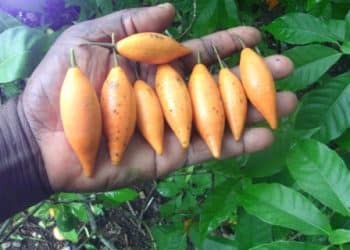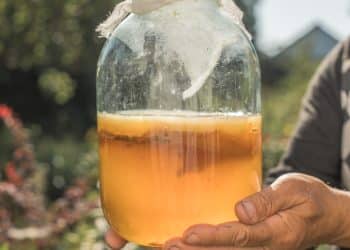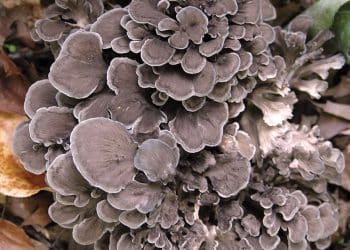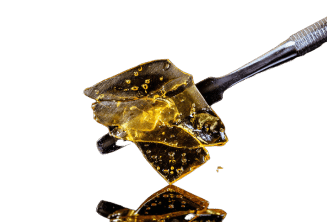Three ways for extracting fragrant botanical essences
As science catches up to cultural and personal preferences, my guess is that we’ll continue to recognize the importance of terpenes, not just in cannabis and hemp products, but for our overall wellbeing. Botanicals containing terpenes manufacture these ingredients for many reasons, most of which regard destructive outcomes through awesome displays of natural and fragrant weaponry and ensuing warfare.
A bug chews on a leaf and the plant retaliates either to dissuade the herbivore directly with a bitter taste, or, better yet, the plant plays Don Corleone and hires some henchmen to take care of business. Such is the case with the terpenoid nerolidol, which some plants release in response to attack by spider mites. [1] The fragrance wafts across some distance and into the purview of the predatory mite, a carnivore.
And yet, humankind can medicinally benefit from these defense molecules which have bequeathed anti-cancer [2], improved memory [3], antioxidant [4], and drug potentiation [5] properties, to highlight four. Thus, they are of vast importance from these days forward.
There are multiple ways to extract terpenes from botanicals. This article contains three: steam distillation, subcritical carbon dioxide (subCO2), and hexane.
Steam Distillation
Steam distillation is a mature technique. You can see a graphic of the setup and process flow here. This method uses a heat source to convert liquid water to steam which, in turn, courses through the plant matter. Biomass is contained in a pot that has a hole at the bottom to allow steam to come in from a steam line and heat the biomass, liberating the oil from the plant. This oil is in a vapor state, though, and a condenser is used to cool the essential oil vapor back to a liquid state. Condensers work by having water flow on the outer chamber while the vapor of interest is housed in an inner chamber. The liquid oil as well as the condensed steam are collected in a vessel, such as a round bottomed flask. The terpenes and the water aren’t miscible, however, and can be separated. Some researchers have coupled microwave capabilities to steam distillation. [6] They found that they could quicken the extraction 5-fold, from 30 to 6 minutes. Yields were compositionally and chemically similar. [6]
Eden Labs designed commercial vacuum steam distillation platforms called “coldfinger” that range in various still capacities. They did this to improve upon conventional steam distillation which uses temperatures of 100°C, which may damage the more delicate terpenes. Eden’s systems extract at 50°C.
Subcritical CO2
Supercritical CO2 presents a common method for botanical extraction. The temperature and pressure that confer the supercritical point are 31.1°C (87.98°F) and 72.9 atm (7.39 MPa, 1,071 psi, 73.9 bar), respectively. When the pressure is retained, but the temperature drops below 31.1°C, the process is termed subCO2.
SubCO2 extraction doesn’t have the same solvency (how well a solvent will dissolve something) as supercritical CO2 extraction. So, the main uses of subCO2 include lighter compounds, whereas heavier things like waxes and resins will more readily dissolve once conditions are raised into the supercritical realm. Because of the lower temperatures employed in subCO2, the technique is primed for the more delicate terpenes. That said, supercritical CO2 can also be used to extract terpenes from plants. [7]
Hexane
Hexane is a nonpolar organic (in the chemical usage of the word) solvent, and due to the like-dissolves-like property, hexane is good for terpenes, since many are hydrocarbons (terpenoids like linalool or menthol are a bit more polar due to oxygen). Using hexane presents some safety considerations, but the solvent has been used in extracting different cooking oils like canola and soybean oils. The use of hexane for soy-based products has caused a stir since the US Food & Drug Administration hasn’t regulated the ingredient. In many cases, although hexane works, researchers have sought greener alternatives to limit detrimental repercussions from using the solvent, like air pollution and toxicity. [8]
References
- Kappers, I, et al. “Genetic Engineering of Terpenoid Metabolism Attracts Bodyguards to Arabidopsis.” Science, vol. 309, 2005, pp. 2070-2072. [journal impact factor = 41.063; cited by 423 (ResearchGate]
- Cavalieri, E, et al. “α-Bisabolol, a Nontoxic Natural Compound, Strongly Induces Apoptosis in Glioma Cells.” Biochemical and Biophysical Research Communications, vol. 315, 2004, pp. 589–594. [journal impact factor = 2.559; cited by 100 (ResearchGate]
- Maria, S-G, et al. “Linalool Reverses Neuropathological and Behavioral Impairments in Old Triple Transgenic Alzheimer’s Mice.” Neuropharmacology, vol. 102, 2016, pp. 111–120. [journal impact factor = 4.249; cited by 37 (ResearchGate)]
- Neto, J, et al. “Antioxidant Effects of Nerolidol in Mice Hippocampus After Open Field Test.” Neurochemical Research, Vol. 38, no. 9, 2013, pp. 1861–1870. [journal impact factor = 2.125; cited by 40 (ResearchGate)]
- Su, J, et al. “Natural Borneol, a Monoterpenoid Compound, Potentiates Selenocystine-Induced Apoptosis in Human Hepatocellular Carcinoma Cells by Enhancement of Cellular Uptake and Activation of ROS-Mediated DNA Damage.” PLoS One, vol. 8, no. 5, 2013, pp. e63502. [journal impact factor = 2.776; cited by 46 (ResearchGate)]
- Sahraoui, N, et al. “Improved Microwave Steam Distillation Apparatus for Isolation of Essential Oils: Comparison with Conventional Steam Distillation.” Journal of Chromatography A, vol. 1210, no. 2, 2008, pp. 229–233. [journal impact factor = 4.169; cited by 84 (ResearchGate)]
- Danh, L, et al. “Comparison of Chemical Composition, Antioxidant and Antimicrobial Activity of Lavender (Lavandula angustifolia L.) Essential Oils Extracted by Supercritical CO2, Hexane and Hydrodistillation.” Food Bioprocess Technol, vol. 6, no. 12, 2013, pp. 3481-3489. [journal impact factor = 3.032; cited by 44 (ResearchGate)]
- Kumar, SPJ, et al. “Green Solvents and Technologies for Oil Extraction from Oilseeds.” Chemistry Central Journal, vol. 11, no. 1, 2017, pp. 9. [journal impact factor = 2.094; cited by 30 (ResearchGate)]











